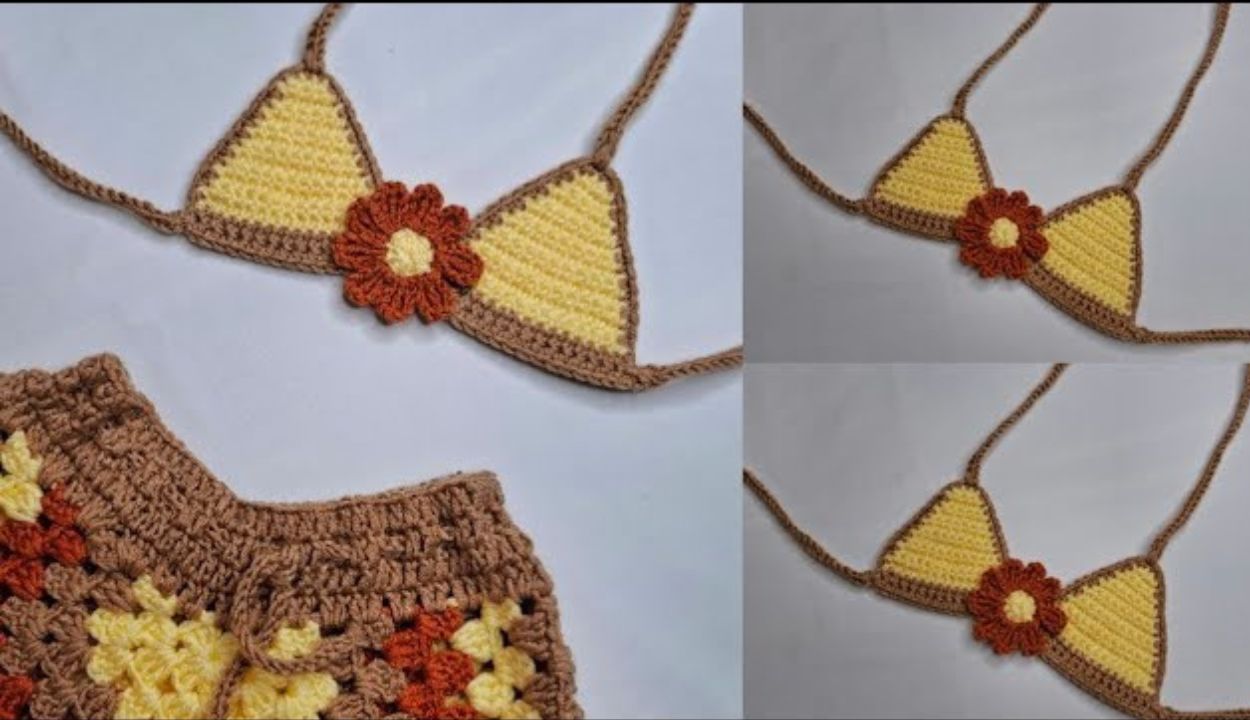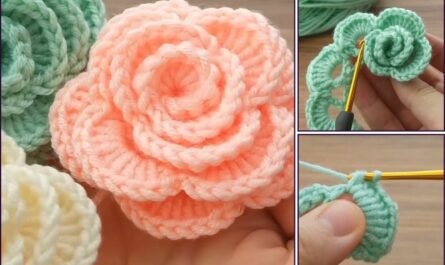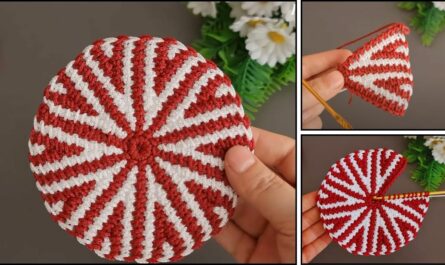Crocheting a bikini top for kids can be a really fun and rewarding project! It allows for a lot of creativity with colors and can be customized for different sizes. Since you’re in Phnom Penh, where it’s warm, using the right yarn is crucial.
100% cotton yarn is by far the best choice for children’s swimwear. Here’s why:
- Breathable: Cotton is naturally breathable, keeping kids comfortable in the heat.
- Absorbent: It absorbs water well, making it suitable for swimwear.
- Durable: It holds up well to wear and washing, which is important for active kids.
- Soft: Most cotton yarns are soft against delicate skin.
- Less Stretch: Compared to acrylic, cotton has less stretch when wet, helping the top maintain its shape.
Avoid acrylic yarns for swimwear if possible, as they don’t breathe well, can get heavy when wet, and tend to stretch out considerably.
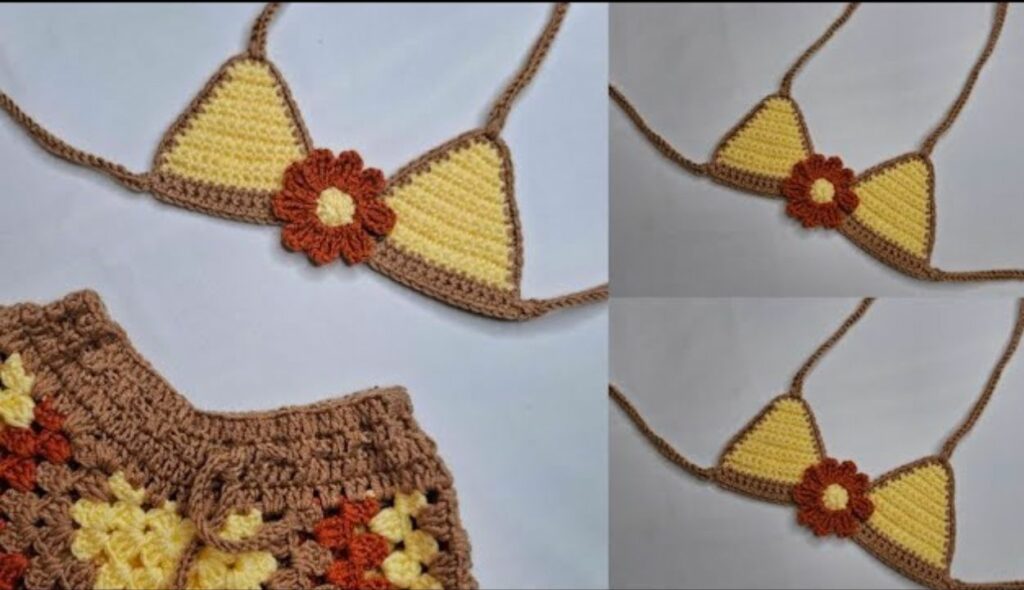
How to Crochet a Simple Bikini Top for Kids
This pattern is designed for beginners and focuses on a classic triangle-style bikini top. We’ll start with the cups and then add the straps and bands. This pattern will be given for a toddler/small child size (approx. 2-4 years old) with notes on how to adjust for slightly larger sizes.
1. Essential Materials You’ll Need
- Yarn:
- 100% Cotton Yarn (DK/Light Worsted Weight): About 50-100g, depending on the size and your tension. Choose a fun, bright color or two!
- Crochet Hook:
- A 3.0mm (US C/2) or 3.5mm (US E/4) hook. A smaller hook creates a denser fabric, which is good for swimwear to prevent too much gapping when wet.
- Scissors: For cutting yarn.
- Yarn Needle (Tapestry Needle): Essential for weaving in ends.
- Stitch Markers (Optional but Recommended): To mark the center increase stitch for the cups.
2. Basic Crochet Stitches You’ll Use
This pattern uses fundamental crochet stitches:
- Chain (ch): Used for foundation chains and straps.
- Slip Stitch (sl st): For joining and neatening.
- Single Crochet (sc): Creates a dense fabric, good for edging.
- Half Double Crochet (hdc): A good all-around stitch for the cup, offering decent coverage and speed.
- Double Crochet (dc): A taller stitch, could be used for larger cups or a different look.
- Working in Rows: The cups are worked in rows.
- Fasten Off: Securely ending your work.
- Weaving in Ends: Hiding yarn tails for a neat finish.
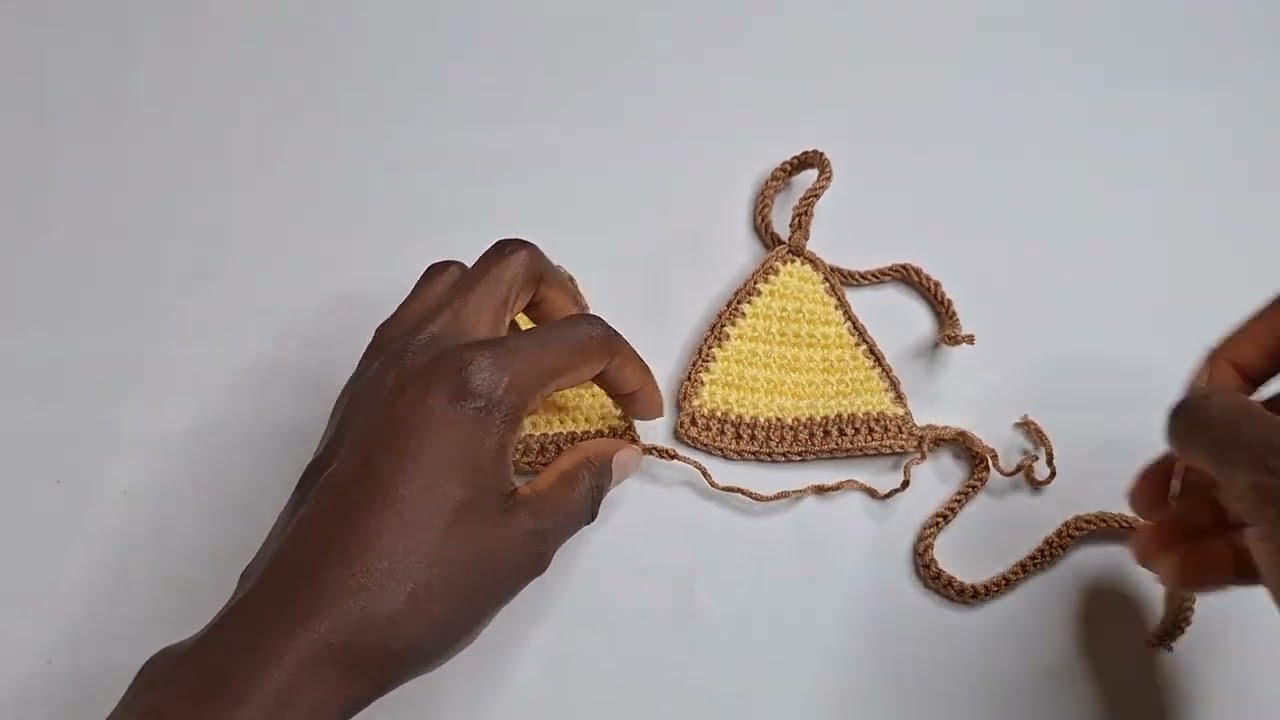
Crochet Kids Bikini Top Pattern (Toddler/Small Child – Approx. 2-4 Years)
This pattern makes two identical triangle cups, then adds the neck and back straps.
Abbreviations (US Crochet Terms):
- ch: chain
- sl st: slip stitch
- sc: single crochet
- hdc: half double crochet
- dc: double crochet
- st(s): stitch(es)
(...): work stitches into the same stitch or space
Part 1: Crocheting One Bikini Cup (Make 2 Identical Cups)
Each cup is worked in rows, increasing at the center top to form the triangle shape.
- Foundation Chain: Ch 12. (This chain determines the width/height of your cup. For a slightly larger cup, add 2-4 more chains; for a smaller cup, remove 2-4 chains).
- Row 1: Hdc in the 3rd ch from hook (the first 2 ch count as a ch-2 for turning). Hdc in each ch across until you reach the last chain. In the last chain, work (2 hdc, ch 2, 2 hdc). Now, working down the opposite side of your foundation chain (into the unused loops), hdc in each st across. (You’ll end up with 2 hdc in the very first chain of your original row).
- Place a stitch marker in the ch-2 space you just created at the very top point of the cup.
- Row 2: Ch 2 (counts as first hdc), turn your work. Hdc in each st across until you reach the ch-2 space (marked). In the ch-2 space, work (2 hdc, ch 2, 2 hdc). Hdc in each remaining st across.
- Move your stitch marker to the new ch-2 space.
- Repeat Row 2 for a total of 4-6 rows, or until your cup reaches the desired size for the child.
- For a larger size (e.g., 5-7 years), you might do 7-8 rows.
- For a very small size (0-1 year), 3-4 rows might be enough.
- Fasten off, leaving a tail of about 6 inches (15 cm) for weaving in.
- Repeat steps 1-5 to make the second identical cup.
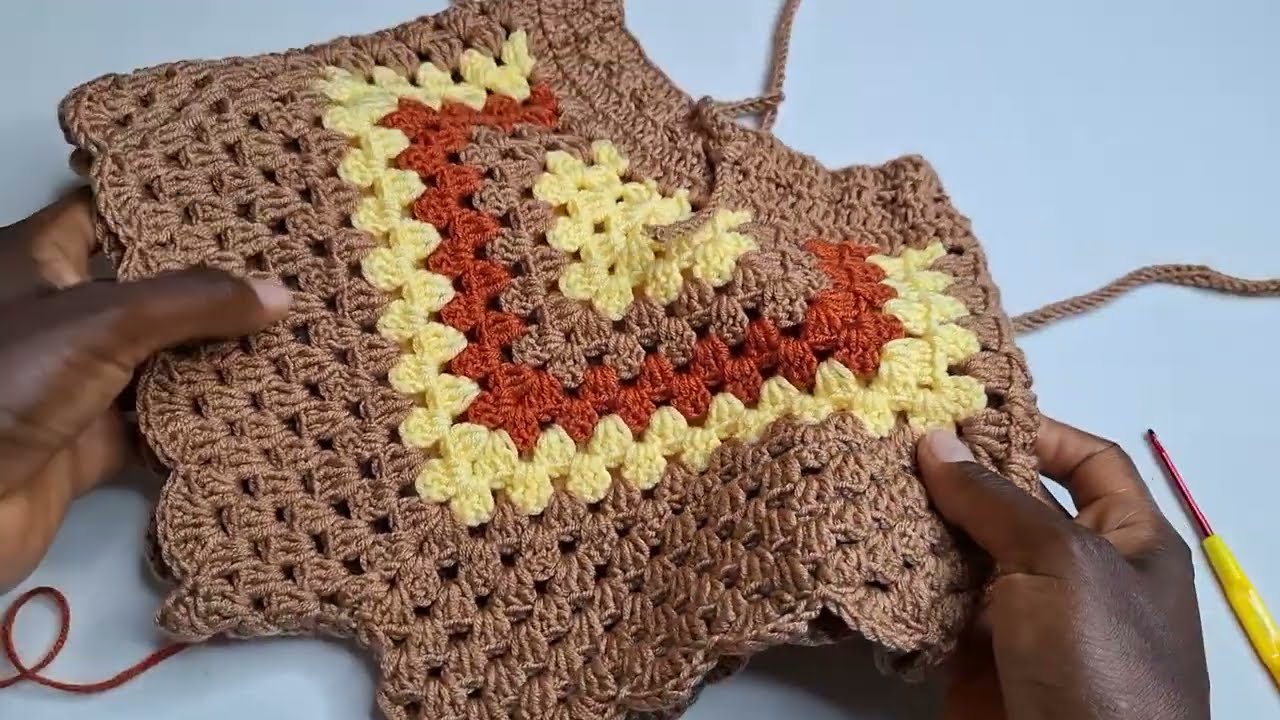
Part 2: Edging and Attaching Straps
Now you’ll join the cups and add the neck and back ties.
- Join the Cups (Optional): If you want a small gap between the cups, skip this step. If you want them slightly closer, you can:
- Take one cup and sl st into the very bottom corner stitch. Ch 1-2 (for a tiny connecting chain). Sl st into the corresponding bottom corner stitch of the second cup. Fasten off and weave in ends. This creates a small connector.
- Create the Top Neck Strap (from the center point of each cup):
- Take one cup. Join your yarn with a sl st into the ch-2 space at the very top point of the cup (where your stitch marker is).
- Ch 50-70 (adjust for desired neck strap length and tie allowance).
- Sc in the 2nd ch from hook and in each ch back down the strap. Sl st back into the original ch-2 space on the cup to secure.
- Fasten off, weave in end.
- Repeat for the second cup.
- Create the Bottom Back Straps (from the bottom side of each cup):
- Take one cup. Join your yarn with a sl st into the bottom corner stitch of one of the straight bottom sides of the cup (not the side where you potentially connected them).
- Ch 50-70 (adjust for desired back strap length and tie allowance).
- Sc in the 2nd ch from hook and in each ch back down the strap. Sl st back into the original bottom corner stitch on the cup to secure.
- Fasten off, weave in end.
- Repeat for the remaining bottom corner of the second cup.
- Add a Bottom Band (Optional but Recommended for Stability): This helps stabilize the bottom of the top.
- Join your yarn with a sl st into the bottom corner stitch of one cup (where a back strap starts).
- Ch 1. Work sc stitches evenly across the bottom edge of that cup.
- If you joined the cups with a short chain, sc into that chain.
- Continue working sc stitches evenly across the bottom edge of the second cup.
- Continue chaining for a few stitches (e.g., ch 5-10) to create a small connecting band, then sl st back into the very first sc you made at the beginning of this round/row. This forms a small closed loop at the bottom.
- Fasten off and weave in ends. This step helps keep the bottom of the cups together more securely than just separate tie strings.
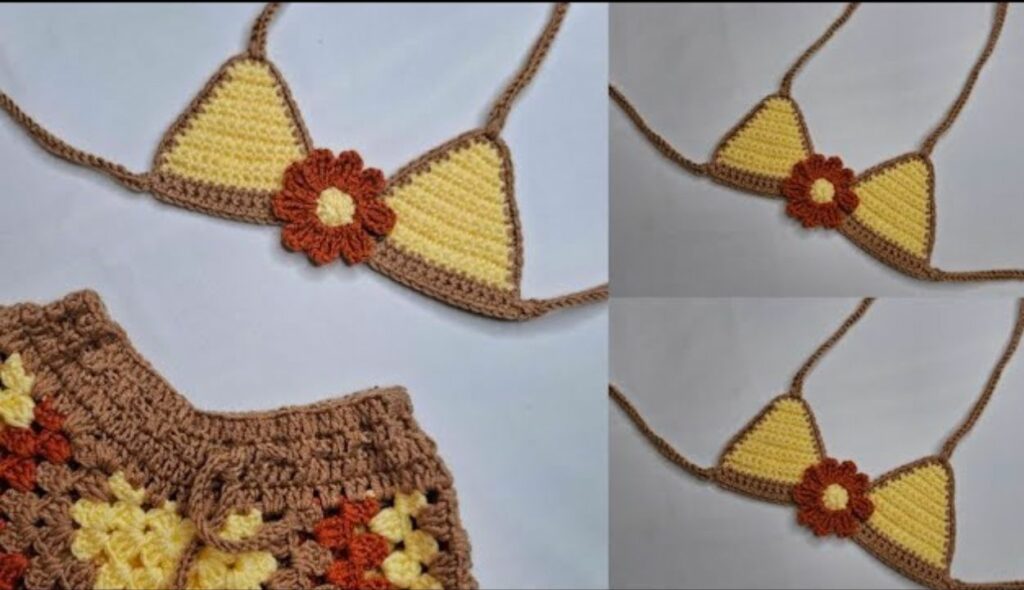
Part 3: Finishing Touches
- Weave in ALL Ends NEATLY: This is crucial for a professional look and, more importantly, to prevent unraveling during wear and washing. Use your yarn needle to carefully weave in every single yarn tail securely.
- Try On/Check Fit: If possible, have the child try it on or compare it to their current swimwear to ensure a good fit.
- Blocking (Optional): For cotton items, a gentle wet block can help even out stitches and improve the drape.
- Gently wet the bikini top.
- Lay it flat on a towel, gently shaping the cups and straps. You can pin the straps to a blocking mat if you want them perfectly straight.
- Allow it to air dry completely.
Tips for Customizing Your Kids Bikini Top
- Sizing Up/Down:
- For cups: Adjust the starting chain length (more chains for wider/taller cups) and the number of rows (more rows for larger cups).
- For straps: Adjust the chain length for ties as needed.
- Stitch Variety: Instead of hdc for the cups, you could use single crochet (sc) for a very dense, firm cup (good for smaller sizes) or double crochet (dc) for a lacier, quicker cup (might need more rows for coverage).
- Ruffles/Edging: For a cute detail, add a final row of sc stitches or picot stitches around the outer edges of the cups, or around the bottom band for a slight ruffle.
- Color Blocking: Use different colors for each row of the cup, or make the straps a contrasting color.
- Embellishments: Sew on a small crocheted flower or a few beads (ensure beads are securely attached and child-safe) for extra flair.
- Lining (Advanced): For true swimwear, a fabric lining is recommended to prevent transparency when wet. This would involve basic sewing skills to create and insert a lining.
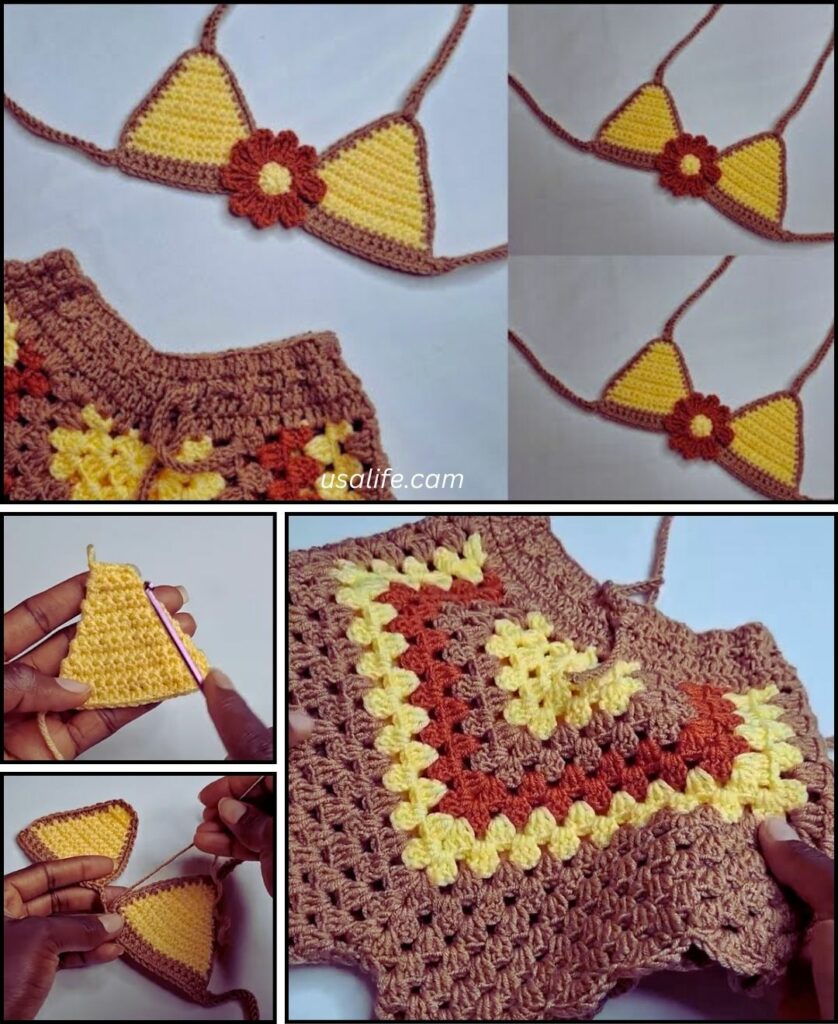
You’re now all set to crochet a lovely bikini top for a child! Happy crocheting!
